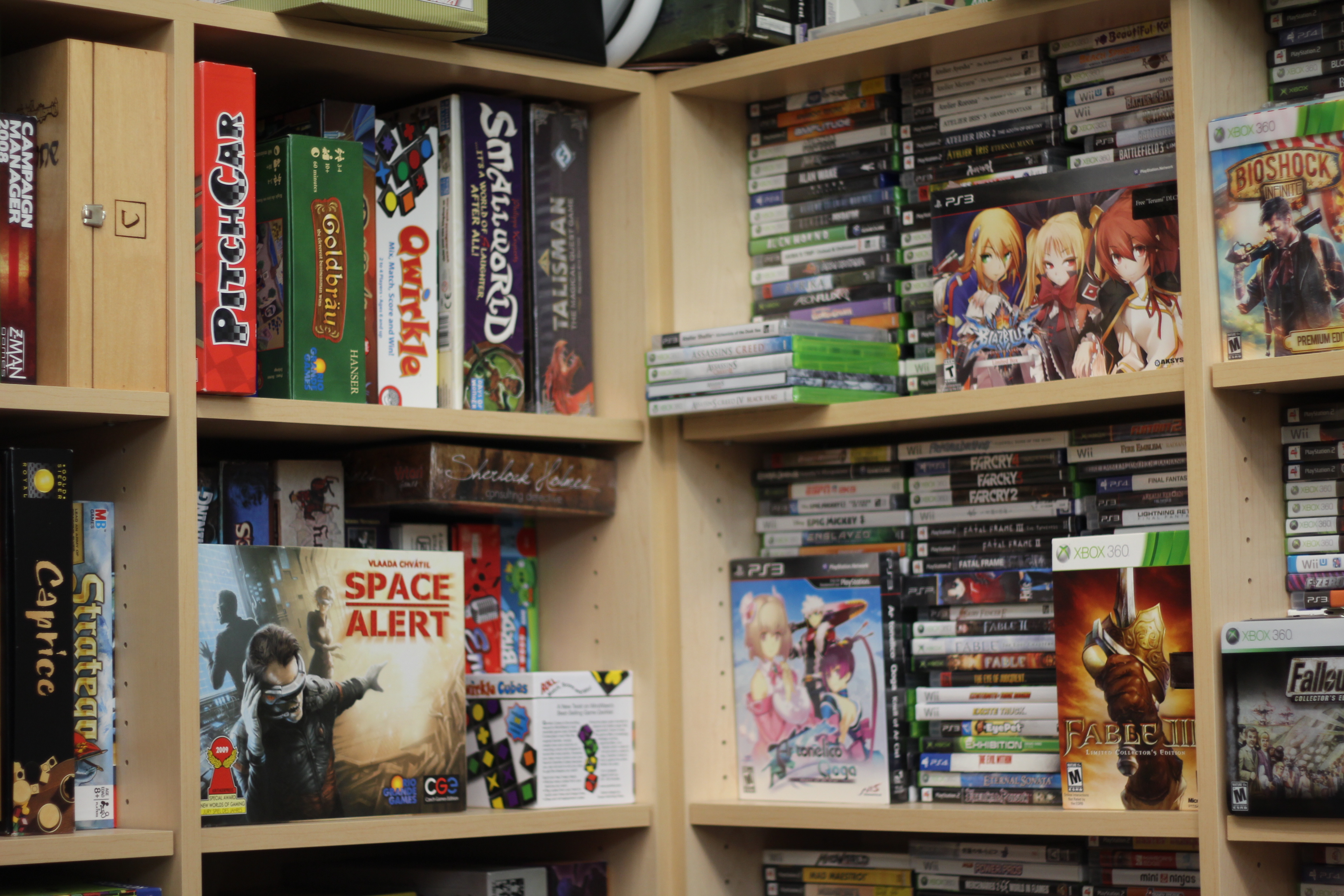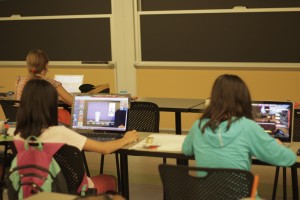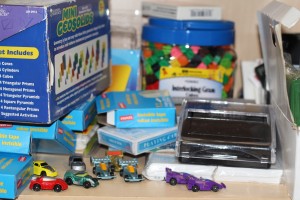Tiddlywinks and Teacher Education: MIT’s Game Lab
-
-
slice.mit.edu
Filed Under
Recommended

Caption: Video and board games in the Game Lab.
A room tucked in a Building 26 hallway is filled with copies of Assassin’s Creed, World of Warcraft, and Bioshock piled high next to board games like Apples to Apples and Quirkle. Turn around and you’ll find a mini Link or Yoshi standing beside a box of playing cards and a bulk bag of hourglass timers. This room is part of MIT’s Game Lab and its contents reflect the many aspects of play that Game Lab researchers and students address. The lab explores the potential of all play, whether a video game or the MIT’s famous beer game—created as a supply chain simulation.

Gaming has a long and strong presence in MIT culture, but dating the beginning of the influence is difficult, says Philip Tan ‘01, SM ‘03, creative director at the Game Lab. “If we’re talking about gaming at MIT, we could start off with the history of sports or talk about MIT’s tiddlywinks team,” Tan explains. Digital gaming, however, does have a clear start at MIT. “I would argue the first digital game was made here,” Tan says of Spacewar!—a two-player game developed at MIT in 1962 by Stephen Russell ’60, SM ’62, EE ‘66 and fellow members of the Tech Model Railroad Club.
Though model railroads and digital games seem like an unlikely pair, Tan says they’re a natural fit. “It’s the philosophy of trying to take something that is really complicated in reality and create this scaled down simulation. The only difference is you’re not putting it on a table, you’re creating it digitally,” he says.

Today, gaming at MIT ranges across courses from engineering to economics, and the Game Lab offers resources for students at MIT and for many outside of the Institute. On a summer day, you can find Game Lab programs dotted around MIT. At the Stata Center, elementary school students hunker over laptops building their own games with Girls Make Games. In Building 7, MIT students create games in a multi-week summer workshop. In E15, teachers working with the Scheller Teacher Education Program learn ways to bring gaming ideals into their curriculum.
The Game Lab’s focus on research and programming invites students across the Institute to explore how play can be used for entertainment, education, activism, science, socialization and more. Recently, Game Lab researchers developed OpenRelativity, an open-source toolkit to simulate effects of special relativity by varying the speed of light. Researchers also recently explored how televisual sports videogames like Madden NFL fit into the sports media landscape.
There’s no boundaries for how play can be applied to research or studies and any student in need of inspiration can borrow any of the wall-to-wall games in the Game Lab.
This story is part of gaming week put on by the MIT Alumni Association. Follow along on Facebook and Twitter and join the conversation using #gaming.








